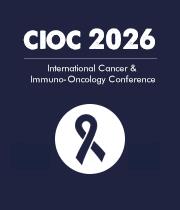Title : Transforming cancer care: Innovations, integrations, and impact
Abstract:
Cancer is a complex heterogenous disease that is constantly evolving; and remains a persistent anomaly. The intricacy of cancer treatment presents a complicated woven biological spectrum encompassing various dimensions including genetics, epigenetics and the tumour microenvironment. Over the past few decades, cancer therapy has undergone a profound transformation with the advent of innovative treatment modalities, including active and passive immunotherapies, stem cell-based approaches, targeted nanocarrier systems, robotic-assisted surgeries, as well as advanced imaging analytics such as radiomics and pathomics. Immunotherapeutic strategies for cancer, including immune checkpoint inhibitors (ICIs), adoptive cell transfer (ACT), cancer vaccines, oncolytic virus therapy (OVT), and chimeric antigen receptor T-cell (CAR-T) therapy, have demonstrated promising clinical outcomes. Among these, CAR-T cell therapy stands out as a recent and highly innovative approach. This technique involves the genetic engineering of a patient’s T cells to express chimeric antigen receptors that specifically recognize and eliminate cancer cells. Notably, CAR-T cells targeting CD19 have achieved remarkable success in treating B-cell lymphoid malignancies. Emerging evidence suggests that STAT3 signalling plays a crucial role in CAR-T cell treatment. STAT3 interacts with other key pathways, including NF-κB, to promote tumour growth and resistance. Persistent STAT3 activation can reduce pro-inflammatory cytokines like IFN-γ, antigen presentation, and reduces cytotoxic activity. As a result, combining STAT3 inhibitors with CAR-T cell therapy has been demonstrated to improve antitumor responses while reducing CAR-T cell-related toxicity in vivo. A variety of stem cell types have been employed in anticancer therapies based on their inherent biological properties. Hematopoietic stem cell (HSC) transplantation, in particular, has proven to be an effective treatment strategy for hematologic malignancies such as multiple myeloma, leukemia, and lymphomas. Nanocarriers such as inorganic nanoparticle, polymeric nanoparticles, polymer–drug conjugates, dendrimers and liposome are widely employed in cancer targeted therapy owing to their ability to facilitate both active targeting—via specific binding to tumor-associated antigens—and passive targeting through the enhanced permeability and retention (EPR) effect. Numerous nanocarriers functionalized with folic acid have been utilized for the targeted delivery of therapeutics in ovarian and endometrial cancers, exploiting the overexpression of folate receptors on these tumor cells. Additionally, bombesin peptide-conjugated PLGA nanoparticles have been developed for active targeting of solid tumors, leveraging the affinity of bombesin for gastrin-releasing peptide receptors commonly upregulated in various malignancies.
Oncology has seen a major breakthrough due to improvements in surgical techniques, especially robotic-assisted surgery, which offers a solid operative field and allows surgeons to execute complex procedures with greater control and precision. Furthermore, by obtaining high-dimensional information from radiological and pathological pictures to guide disease characterisation and treatment planning, radiomics and pathomics have become dynamic and promising methods in cancer diagnostics. Therefore, advancement in research and technological and a thorough understanding of cancer biology can reshape treatment modalities and enhance overall patient care.



